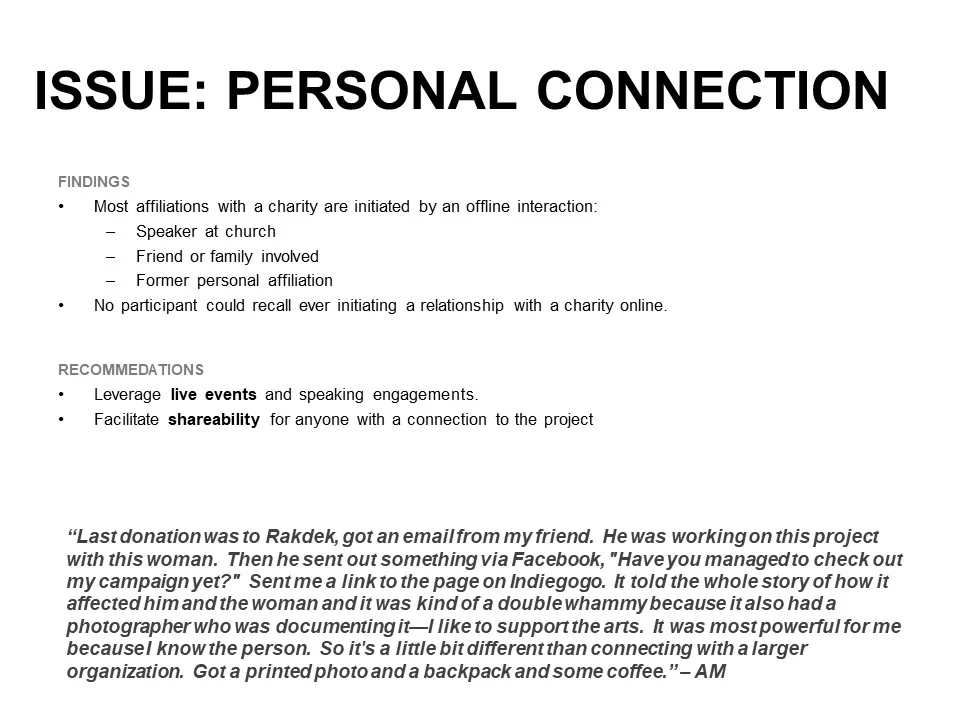World Vision Water
Developing product through the rapid iterative testing methodology.
Challenge
The Water product represented a new framework for giving for World Vision. The charity wanted to know how to leverage new models of fundraising.
A writer, graphic designer and UX designer iterated on competiting directions with varying voice, tone, and interaction in a week of user testing to determine the strongest minimum viable product.
Hypothesis
Donors would be more engaged with a specific, ongoing project with status updates and tangible results rather than static giving channels.
Methodology
Using rapid iterative testing, on-site users were exposed to divergent prototypes of products. Feedback was incorporated daily as testing continued through the week. A competing site was used as a control
Solution
A solution-oriented product, rather than one focused on crises or problems was more motivating. Users appreciated itemized costs, visual storytelling, and social components.
























